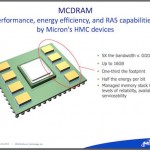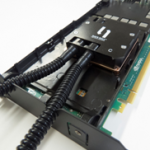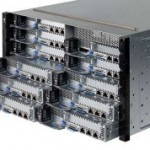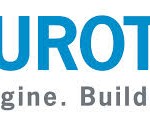In the course of this talk, Intel’s Raj Hazra unveils details of the Knights Landing architecture including the new Omni Scale Fabric, an integrated, high performance interconnect designed for CPU to CPU communications. “The industry ecosystem needs to work together to tackle challenges in system architecture, programming models, and energy efficiency – all while lowering the thresholds for broader user access and usability.”
Archives for June 2014
Video: Exascale HPC Storage – A Possibility or a Pipe Dream?
“The advances in NV-RAM promise exascale level throughput, however, the building and implementing of full solutions continues to be expensive. While the requirements on performance increase linearly, the requirements on capacity is ramping exponentially. Noting HDDs are increasing in capacity and speed, are these new drives good enough to fulfill these essential ares? Many in the industry suggest a combination of both is the right path, but that suggests a software stack capable of handling multi-level storage transparently and such software does not actu-ally exist in the HPC world today.”
Moab 8.0 Speeds HPC and Big Workflow
Today Adaptive Computing announced that the Moab 8.0 HPC Suite-Enterprise Edition will be generally available within 30 days.
Video: DDN – The HPC Storage Leader
“Infinite Memory Engine (IME) is next-generation storage system being designed by DDN to meet the needs of exascale supercomputers. IME employs innovative methods to obtain the superior performance efficiency from non-volatile memory technologies. These methods include optimistic non-blocking writes and means for dynamic load balancing output streams.”
Video: Intel Omni Scale Fabric to Power Next-Generation HPC
In this video, Barry Davis from Intel describes the company’s new Omni Scale Fabric, an integrated, high performance interconnect designed for CPU to CPU communications. “”Intel is re-architecting the fundamental building block of HPC systems by integrating the Intel Omni Scale Fabric into Knights Landing, marking a significant inflection and milestone for the HPC industry,” said Charles Wuischpard, vice president and general manager of Workstations and HPC at Intel. “Knights Landing will be the first true many-core processor to address today’s memory and I/O performance challenges. It will allow programmers to leverage existing code and standard programming models to achieve significant performance gains on a wide set of applications. Its platform design, programming model and balanced performance makes it the first viable step towards exascale.”
Slidecast: Micron HMC Memory Technology to Enhance Knights Landing
In this slidecast, Mike Black from Micron describes the company’s Hybrid Memory Cube technology for the next-generation Xeon Phi processor, codenamed Knights Landing. “Delivering 5X the sustained memory bandwidth versus DDR4 with one-third the energy per bit in half the footprint, the Knights Landing high performance, on package memory combines high-speed logic and DRAM layers into one optimized package that will set a new industry benchmark for performance and energy efficiency.”
Benefits of Liquid Cooling for HPC
In this Sponsored Post from CoolIT we explore the many benefits liquid cooling offers to HPC and data center operators. For starters liquid cooling is about 3,500 times better at storing and transferring heat than air. Direct contact liquid cooling (DCLC) uses the exceptional thermal conductivity of liquid to provide dense, concentrated cooling to targeted areas. The many benefits of liquid cooling may surprise you.
UNLV Supercomputing Center Switches to Altair PBS Professional
Today Altair announced that UNLV has chosen PBS Professional to replace its previous HPC workload management implementation at the National Supercomputing Center for Energy and the Environment (NSCEE).
Trending Towards Ultra-Dense Servers
In late 2010 and throughout 2011, however, we noticed a shift in the HPC market as new workloads such as digital media, various financial services applications, new life sciences applications, on-demand cloud computing services and analytics workloads made their way onto HPC servers. We are now seeing another new trend developing in the HPC space with the introduction of ultra-dense servers.
Eurotech Combines 64-bit ARM CPUs and NVIDIA GPUs
Today Eurotech announced that the company has teamed up with AppliedMicro Circuits Corporation and NVIDIA to develop a unique HPC system architecture that combines extreme density and best-in-class energy efficiency.











